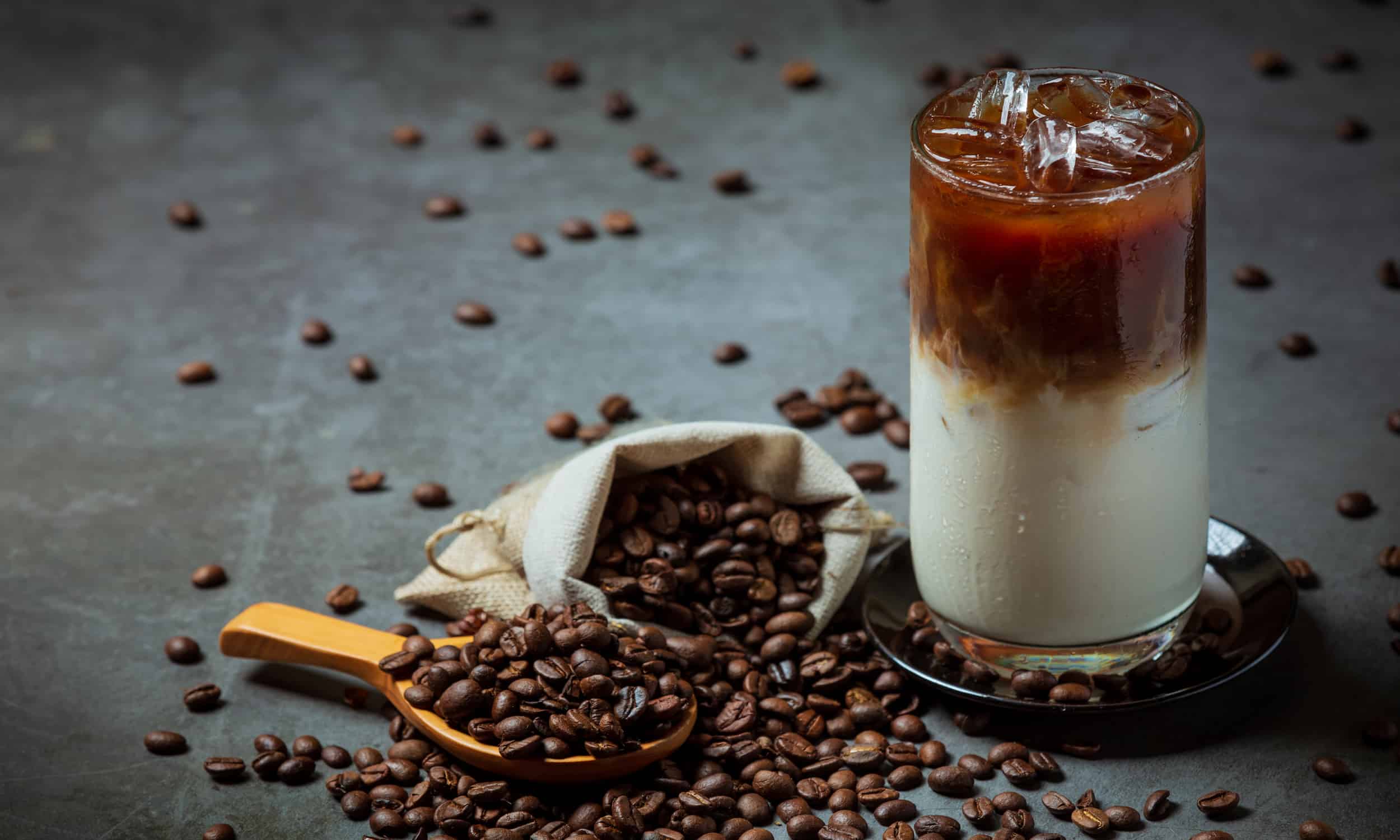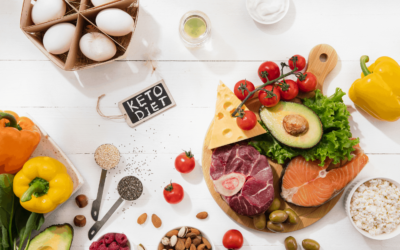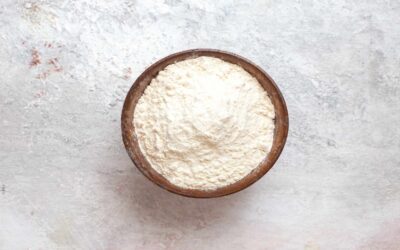If you are a coffee lover, then you are certainly in the right place. Coffee is the most consumed drink in the world. As a coffee addict, you probably start or end your day with coffee only.
It is common knowledge that coffee contains caffeine. Other beverages such as tea, soft drinks, energy drinks, chocolate and other beverages can also have caffeine.
Caffeine acts on the central nervous system and the autonomic nervous system. That is why whenever we drink coffee, we feel fresh and active. Caffeine also acts on adenosine to prevent the drowsiness. Indeed, caffeine does bring both positive as well as negative health effects.
Well, talking about coffee and caffeine, are you actually aware of the origin of coffee? Any idea how coffee is brought all over to the world? What are the various types of coffee? Most importantly, do you know how much caffeine is in a cup of coffee?
Well, rest assured. It’s time to dive deep and find out all the interesting answers to these questions here in this article.
HOW MUCH CAFFEINE IS IN A CUP OF COFFEE?
According to the caffeine informer database, the following highlights the caffeine content of some specific coffee brands:
Dunkin’ Donuts
Seattle’s Best
Starbucks
Death Wish Coffee
FACTORS AFFECTING THE CAFFEINE CONTENT OF COFFEE
Brewing
Roasting
Bean Species
Preparation
COFFEE DECAFFEINATION
There are different methods of making decaffeinated coffee. Coffee beans soaked in water then passed through activated charcoal which removes the caffeine. The water gets evaporated while leaving behind decaffeinated coffee with its flavor. In the method of carbon dioxide extraction CO is forced to pass through green coffee beans at above 31.1 degree Celsius.
As we know, CO has both gas and liquid properties; therefore, it penetrates deep into the beans and dissolves as much as 97-99% of the caffeine. Afterwards high-pressure water is sprayed on these beans to remove caffeine. Then the caffeine is separated with charcoal adsorption, or by distillation.
Decaffeinated coffee can still contain some caffeine. This study about the presence of caffeine in decaffeinated coffee shows that many coffee samples still contain small amounts of caffeine.
THE HISTORY OF COFFEE
The goat herder Kaldi discovered the coffee plants when his goats ate the berries of a certain tree and his goats became so energetic, restless that they did not sleep for the whole night. He recounted this event to the master of the local monastery.
Out of curiosity, the master prepared a drink from the same berries, and for his surprise it produced similar effects on him also. He spread this information to other monks of nearby areas.
Slowly by the 16th century, coffee made its way into the middle east, Persia, Turkey, and northern Africa. In the 16-17th century, the trade between Venice and the Middle East brought coffee to European countries. The Dutch East India Company imported coffee and grew the crop in Java, Indonesia.
By the 16-17th century, coffee was famous in Europe, Africa, India and the Middle east! In the early 17th century, coffee was first introduced in North America. Its cultivation started to increase slowly in Brazil during the 18th century. Now coffee has become a highly valued crop in most developing countries.
COFFEE CULTURE
Coffee houses bring their own culture to society. Both in the past and now, coffee houses are symbols of social gathering. The first coffee house was established in Mecca in the 15th century, where they named it, qahvehkhanehs.
Back then coffee houses were also known as “Schools of wisdom”. As the name suggests, people used to gather in coffee clubs to discuss politics, religious subjects and to enjoy music or singing.
The first coffee house of Europe opened in Rome in 1645. In the 17th century coffee houses gained success among people in Europe.
THE PROCESS OF CULTIVATING COFFEE
The industry, where coffee is converted from raw cherries into fine powder is a big one. Though the process of converting green coffee beans into an edible substance is always the same, methods are different. These methods influence the flavor, concentration, and aroma of coffee.
First, workers pick the ripe cherries. During the wet process the seed’s coverage is removed with the help of water before they are dried. This coffee is known as washed or wet processed coffee.
The dry process is the oldest method. The entire hand-picked cherries are cleaned and placed in the sun to dry. This coffee is called natural or unwashed coffee.,
The final steps in coffee processing involve removing the last layers of dry skin and remaining fruit residue from the dry coffee, this is called milling.
The hulling is the first step of dry milling and removes the remaining water content of the dried cherries. It can be the crumbly skin of washed coffee or the dried skin of the semi-dry processed coffee. The polishing is an optional process, the silver skin of beans after hulling is removed. It improves the appearance of green coffee.
A battery of machines sorts out the coffee beans according to their density and size. It also removes sticks, rocks, nails and dirt from dried coffee beans. The grading of coffee beans is done with various criteria like the size of beans, at what altitude it was cultivated and how it was picked and dried. Coffee is also graded by its number of imperfections and its taste. All coffee is transported in jute bags. It is sold to consumers with roasting degrees of light, medium, medium-dark and dark flavor.
FACTORS CONTRIBUTING TO THE BEST COFFEE
Brewing
The brewing depends on the fineness of the grind, the amount of water used to extract the coffee flavor, and additional flavoring with sugar or spices. It has a brew ratio which means the ratio of coffee to water.
Before you make coffee, the grounding and brewing of coffee beans are the most important steps. The brew ratio for non-espresso coffee is two tablespoons for a 150-to-180-millilitre cup.
There are several methods available for brewing, but the most widely used methods are boiling, steeping and pressurized.
Espresso coffee is more concentrated because brewing is done with high pressure. In this method, the hot pressurized and vaporized water is forced down on ground coffee which produces high pressure. Espresso has a reddish-brown foam (crema) on the surface.
In automatic coffee makers gravity is used to prepare coffee. Hot water drips on coffee grounds that are held in paper, plastic coffee filter; allowing the water to pass through the ground coffee while extracting its oils and essences. Unwanted sediments remain in the filter and the liquid coffee is ready to drink.
The boiling method is the oldest method. Turkish coffee is an example of it. To prepare coffee you grind the coffee beans into a fine powder, mix it with water and boil it in a pot called “Cezve”. This produces a strong coffee with a layer of foam on the surface. Unwanted sediments settle at bottom.
The steeping method involves a French press (also known as a cafetière). In this method, grounded coffee beans and water are combined in a cylindrical vessel to brew for a few minutes. A circular filter is pushed down from the top to force the grounds to bottom; therefore, the filter retains the unwanted sediments at the bottom and the liquid part of the coffee is ready to be served from the container. It is also a strong coffee.
Cold brew coffee is also an example of the steeping method. It is prepared by steeping ground beans in cold water for several hours and then filtering them. It has lower acidity than hot coffee.
Grinding
Roasting
Coffee roasting is a complicated process of application of heat to green coffee. This process helps to transform sugar, protein, acids properties of coffee into different aromas and flavors.
The most useful machines for roasting are drums and hot-air. Coffee is roasted at a roastery, in a grocery store or you can roast it at home.
As soon as the application of heat is reached at a particular range, the color of the coffee beans shifts to yellow and slowly towards darker browner shades. In the later stage, you can observe the oily surface of the beans.
The first cracking sound will appear at 196°C, at this stage moisture is evaporated and the beans start to increase in size. The second crack happens at approximately 224°C, pressure inside the beans increases and it becomes more brittle, which means that the coffee is ready to grind and brew.
If you roast the coffee at a higher temperature than this, it will lose its characteristics.
Grinding and roasting decide the flavors and aroma of the coffee but the most important thing is the beans. There are different types of coffee beans, the most used are Arabica and Robusta.
The Coffee Species
60% of coffee production is arabica. A high-altitude area with steady rainfall and shady areas is favorable for this bean. The beans are bright in color with moderate amounts of acidity, multi-layered flavors and aromas. If you want to enjoy Arabica coffee, serve it hot. When you serve it cold or with cream, its quality is diminished.
The robusta is a robust type. This variety tolerates different environments and is immune to disease. It has double the amount of caffeine of arabica, which makes it a robust variety.
The beans are smooth with low acidity and hints of chocolate flavor. This is perfect for coffee lovers who like creamy and sugary coffee, as this coffee maintains its unique flavor with milk and sugar. This coffee is always the victim of malpractice, if your coffee has a flat smell and rubbery texture, then it’s not a Robusta!
The volcanica coffee is cultivated in areas with past or present volcanic activity. You can find these beans in central and South America, The Caribbean, part of Africa and the Middle East and Asia. In cold temperatures, the bean grows and the cherry ripens very slowly which increases the quality of coffee.
The peaberry beans are originally from Tanzania. This is a rare variety with a smooth texture. These beans are lightly roasted and rich in characteristic flavors like lemon, peach, and black tea.
The sumatramandheling beans belong toIndonesia.This variety is very low in acidity with aroma ranging from maple syrup, chocolate and toasted almond.
The Indonesian sulawesitoraja coffee beans are also known as Sulawesi, Celebes coffee. It hails from East Indonesia. It differs from other coffee beans because of its processing method.
The method is known as “wet hulling”, freshly picked beans are put into a pulper, all of the covering is removed except a thin layer of mucilage of the beans. They keep these beans as they are for 24 hours, and afterward remove that last thin layer of the coffee bean. The now naked beans are dried naturally, after which they are ready for roasting. Because of this unique method of hulling, the beans are roasted unevenly which makes the coffee earthy and tasty.
The “White Eagle” is the most special variety of the sulawesitorajacoffee, referred to as the “Crown Jewel of Toraja Arabica Coffees”. Only 300 to 600 bags are produced per year, which will give you a fair idea about its specialty.
The cultivation of the white eagle variety is always present in secluded areas, away from civilization; to transport the beans for processing requires at least 4 days. Beans are smaller in size, very smooth and have well balanced acidity. It has different flavors of strawberry and chocolate. The taste of this coffee appeals to coffee drinkers who love a strong aroma and taste as well as those who love fruity and flowery flavors of coffee.
The central American geisha coffee beans are originally from Ethiopia but they are cultivated in Columbia as well. This coffee has a sweet and floral taste. The grind size depends on the method of brewing. The coffee beans are fully ripped while picking them, so they have a sweet taste.
The green coffee is the highest quality of arabica coffee with a sweet flavor and a light to medium aroma. This Arabic coffee originated in Ethiopia. For grinding, a medium roast is preferable. This coffee is an espresso roast with a fruity flavor.
Coffee Temperature
For the perfectly brewed coffee the temperature should be 205C. Brewing it hotter can release more aroma, flavor, and acidity. The coffee will turn flavorless and bitter and loose quality. Cold temperatures do not extract whole properties of coffee, so the drink will become tasteless, flat, and sour.
For cold coffee, the water we use for brewing is at room temperature or slightly cooled. Cold brewing will require 12-20 hours. During the cold steeping process, it will take a longer time to extract the flavor and aromas of coffee, which makes it taste lighter. This produces less acidic coffee with different flavors.
PREPARATION OF COFFEE
Now, let’s talk about the different processes of making and preparing coffee.
Filter coffee or drip brew coffee includes preparation in a brew basket which has a coffee filter in it. It is mild in taste and contains a lower level of caffeine than espresso.
Indian filter coffee is prepared in a stainless-steel pot. The coffee is mixed with milk before serving and sugar is added as per individual preference.
In cold brew coffee cold water is passed over coffee grounds and allowed to steep for 8-24 hours. The coffee is filtered and stored in a refrigerator for up to 8 weeks.
You can serve this coffee adding some hot water in a 3:1(hot water to coffee) ratio. This coffee is very low in acidity with a smooth taste. It’s good for people who are vulnerable to digestive issues.
Dutch ice coffee is a cold drip coffee. The taste and consistency are the same as the cold press, but there is less preparation time. The cold water very slowly drips into the coffee ground, this process only takes about two hours.
DIFFERENT WAYS TO ENJOY COFFEE
Hot Drink
In the cappuccino section we have the Espresso and the Ristretto, which is a shorter shot that is sweeter and more flavorful. We also have the Portuguese espresso, which is softer in taste. Then there is the Lungo which is a longer espresso and the americano which is an espresso with hot water. There is also the long Black which is similar to Americano but most famous in Australia and New Zealand.
In the section of the cafe latte there is the caffe breve, a milk based American variation of the latte. There is also the simple latte(latte means milk in Italian). It is an Espresso with steamed milk, cream on the surface of coffee. This is a sweet and flavored drink with caramel, vanilla.
Then there is the caffe macchiato, a double espresso with little steamed milk. Next is the cappuccino, which consists of equal parts of espresso and milk, sprinkled with cinnamon or cocoa powder. The flat white consists of 1:2 ratio of espresso and steamed milk respectively. This is a speciality in Australia and New Zealand.
The Galao is a Portuguese espresso with hot milk. The Latte macchiato is served in a large glass of steamed milk with a small amount of espresso. The mocha is a latte with chocolate. The café con leche is an espresso with steamed milk and less frothy. (“leche” is Spanish for “milk”). The cortado is an espresso with little amount of foamed milk. It can be brewed or boiled and is non-espresso based.
In the category of the drip-brewed coffee with cream we have the black coffee, a french-press-style coffee served without cream or sugar. There is also the white coffee, a black coffee with unheated milk or creamer,particularly famous in the USA. A cafe au lait is the same as a latte, but uses drip brewed coffee instead of espresso with equal amounts of milk.
The kopi tubruk is an Indonesian coffee similar to Turkish coffee. The coffee is boiled with sugar. The Indian filter coffee is common in the southern part of India. It is a drip brewed coffee in a metal coffee filter, served with milk and sugar. The greek coffee is the same as the Turkish coffee. During the grinding of the coffee beans into a fine powder, sugar is added in this process. It does not contain milk. The Indochinese coffee is a strong brew prepared from hot water mixed with sweetened condensed milk. It can also contain ice.It is famous in Vietnam, Cambodia and Laos.
In the category of the fortified coffee, we have the red eye, which consists of one espresso shot with a cup of coffee. As per individual preference one can add milk and sugar. The black eye consists of two espresso shots with a cup of coffee, some add milk and sugar.
There are different flavored coffees that are popular in certain regions. In mocha, coffee chocolate is added. Other substances such as cinnamon, nutmeg, cardamom or Italian syrup. In the USA, vanilla and hazelnut flavours are preferred.
Turkish coffee which is served in small cups (the size of an espresso shot) is the most important part. The coffee is served sweet with sugar and cardamom. Chicory has been used as a substitute to coffee in the past. It is a flavoring agent; which is popular in Café du Monde, New Orleans and an ingredient in madras filter coffee.
Alcoholic Coffee Drinksk
Cold Drinks
In Australia, it is served with cold milk flavor or with ice cream or whipped cream. The frappe which is famous in Greece is a strong, cold instant coffee. It is prepared from one spoonful of instant coffee mixed with milk and water in a shaker. Shake it hard for 1 minute and serve it with ice cubes.
The frappuccino is an ice-blended coffee. The Thai iced coffee is famous in Thai restaurants in the USA. It has coffee, sweet, and condensed milk. The igloo espresso is served in an espresso cup in which the espresso coffee is mixed with crushed ice. In the cold brew coffee, the coffee is slowly brewed with cold water. The affogato contains an espresso shot with a scoop of ice-cream.
HEALTH BENEFITS OF COFFEE CONSUMPTION
Little Excess Risk Of Coronary Heart Disease
Helps Reduce Depression
Halts The Progression Of liver Disease
Reduces Risk Of Type-2 Diabetes
Helps With Fat Burning
Lowers The Risk Of Cancer
Increases Anxiety
The study also shows that high caffeine intake (more than 4 cup of coffee per day) can be a risk factor for anxiety and depression, although effects were sometimes detected at lower rates in males than females.
HEALTH RISKS OF COFFEE CONSUMPTION
Induces Sleeplessness
Prompts Digestive Issues
Unsafe For Breast-Fed Infants
KEY TAKEAWAYS
If you are a coffee lover, then you can enjoy coffee everyday in moderatequantities. There are various types and brands of coffee with different caffeine content. It is also surprising to know there are tons of ways to enjoy coffee.
Yet, if you thinkyou might have a coffee addiction, then you should reduce your coffee intake. You can try to drink decaffeinated coffee or green tea.
In the morning, if you are already feeling fresh, try to replace coffee with hot water. Well, coffee is a drink which hashealth benefits as well as some health risk.As such, it shouldn’t be consumed too much and always consult your doctor before making any changes to your diet.
Article Sources
HealthxTips is committed to delivering content that adheres to highest standard for accuracy, sourcing and objective analysis.
HealthxTips uses only high-quality and trustworthy sources to support the facts in our articles.
1. Alma, M. H., Nitz, S., Kollmannsberger, H., Digrak, M., Efe, F. T., & Yilmaz, N. (2004). Chemical composition and antimicrobial activity of the essential oils from the gum of Turkish pistachio (Pistacia vera L.). Journal of agricultural and food chemistry, 52(12), 3911–3914. https://doi.org/10.1021/jf040014e
2. Ibrahim, N. A., El-Seedi, H. R., & Mohammed, M. M. (2007). Phytochemical investigation and hepatoprotective activity of Cupressus sempervirens L. leaves growing in Egypt. Natural product research, 21(10), 857–866. https://doi.org/10.1080/14786410601132477
3. Ikei, H., Song, C. & Miyazaki, Y. Physiological effects of touching hinoki cypress (Chamaecyparis obtusa). J Wood Sci 64, 226–236 (2018). https://doi.org/10.1007/s10086-017-1691-7
4. Kuriyama, H., Watanabe, S., Nakaya, T., Shigemori, I., Kita, M., Yoshida, N., Masaki, D., Tadai, T., Ozasa, K., Fukui, K., & Imanishi, J. (2005). Immunological and Psychological Benefits of Aromatherapy Massage. Evidence-based complementary and alternative medicine : eCAM, 2(2), 179–184. https://doi.org/10.1093/ecam/neh087
5. Orchard, A., & van Vuuren, S. (2017). Commercial Essential Oils as Potential Antimicrobials to Treat Skin Diseases. Evidence-based complementary and alternative medicine : eCAM, 2017, 4517971. https://doi.org/10.1155/2017/4517971
6. Orhan, I. E., & Tumen, I. (2015). Potential of Cupressus sempervirens (Mediterranean Cypress) in Health. The Mediterranean Diet, 639–647. https://doi.org/10.1016/B978-0-12-407849-9.00057-9
7. Selim, S. A., Adam, M. E., Hassan, S. M., & Albalawi, A. R. (2014). Chemical composition, antimicrobial and antibiofilm activity of the essential oil and methanol extract of the Mediterranean cypress (Cupressus sempervirens L.). BMC complementary and alternative medicine, 14, 179. https://doi.org/10.1186/1472-6882-14-179








0 Comments